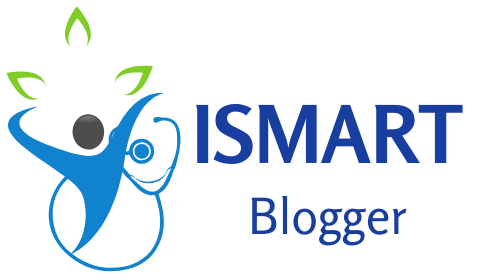Mastering Mindfulness: Daily Self-Care Techniques
Discover the power of mindfulness as self-care. Learn simple techniques for daily practice to find calm and balance in a hectic world.
Mindfulness as Self-Care: Simple Techniques for Daily Practice
Introduction
The modern world is a whirlwind of constant activity, demands, and distractions. From the moment we wake up to the minute we go to bed, our minds are bombarded with information and our bodies pushed to keep up with the fast pace of life.
In this chaotic landscape, self-care becomes an essential practice for maintaining our well-being and finding balance. One powerful tool that has gained significant recognition in recent years is mindfulness.
Definition of Mindfulness
Mindfulness is the practice of bringing one’s attention to the present moment without judgment or attachment. Rooted in ancient Buddhist teachings, it has become widely popularized as a secular practice with proven benefits for mental and physical health.
At its core, mindfulness involves cultivating awareness of one’s thoughts, feelings, bodily sensations, and surrounding environment in a non-reactive manner. In essence, mindfulness allows us to observe our experiences as they arise, acknowledging them without getting caught up in them or clinging to them.
It enables us to fully engage with each moment rather than being lost in regrets about the past or anxieties about the future. By intentionally focusing on the present moment with an open-hearted attitude, mindfulness helps us develop a deeper understanding of ourselves and enhances our ability to respond skillfully to life’s challenges.

Importance of Self-Care in Today’s Fast-Paced World
In today’s hyper-connected society where busyness is glorified, self-care often takes a back seat. Many people mistakenly view it as selfish or indulgent when it is actually an essential component of maintaining overall well-being.
Self-care involves prioritizing activities that nourish and rejuvenate us physically, emotionally, mentally, and spiritually. Our fast-paced lifestyles can lead to chronic stress and burnout if we neglect self-care practices.
Taking care of ourselves enables us to show up fully for others while avoiding exhaustion and resentment. It also enhances our ability to cope with life’s challenges, improves emotional regulation, boosts productivity, and promotes better overall health.
Overview of the Benefits of Mindfulness for Self-Care
Mindfulness serves as a potent tool for self-care due to its wide-ranging benefits. Regular mindfulness practice has been scientifically proven to reduce stress levels, increase resilience, and improve mental well-being.
It enhances self-awareness and self-compassion, fostering a kinder and more accepting attitude toward ourselves. Furthermore, mindfulness cultivates an improved ability to manage emotions effectively.
By observing our thoughts and feelings without judgment, we gain greater clarity about our internal experiences and can respond with wisdom rather than react impulsively. This skill can lead to healthier relationships, better decision-making, and increased emotional intelligence.
In addition to mental health benefits, research has shown that mindfulness can have positive effects on physical well-being. It has been linked to reduced blood pressure, improved sleep quality, enhanced immune function, and decreased inflammation in the body.
In the following sections of this article, we will delve deeper into understanding mindfulness principles and explore various techniques that can be integrated into daily life for self-care purposes. By incorporating these simple practices into our routines consistently and embracing the present moment with open arms, we can embark on a transformative journey towards holistic well-being.
Understanding Mindfulness
Historical background and origins of mindfulness practices
Mindfulness, as we know it today, has deep roots in ancient Buddhist traditions. Originating over two and a half millennia ago, in the teachings of Gautama Buddha, mindfulness practices were developed as a means to cultivate awareness and alleviate suffering.
The early Buddhist texts describe meditation techniques that focused on the breath, body sensations, and present-moment awareness. These practices were instrumental in promoting introspection and gaining insight into the nature of reality.
Buddhist roots and meditation traditions
Buddhist meditation traditions played a central role in the development of mindfulness practice. The Pali Canon, a collection of early Buddhist scriptures, contains detailed instructions on various meditation techniques such as Anapanasati (mindfulness of breathing) and Vipassana (insight meditation).
Monastic communities dedicated themselves to these contemplative practices to enhance their spiritual growth and gain clarity about the nature of existence. Over time, different schools of Buddhism adopted distinct styles of meditation while still emphasizing mindfulness as a fundamental aspect.
Zen Buddhism in Japan introduced Zazen (sitting meditation), which emphasizes direct experiential realization through sustained concentration on breath or koans (paradoxical riddles). Tibetan Buddhism brought forth advanced visualization techniques combined with meditative absorption known as Samatha.
Influence on Western psychology and modern mindfulness movement
The influence of Eastern philosophical concepts like mindfulness began spreading to the West during the late 19th century when scholars such as Paul Carus started translating Buddhist texts into English. However, it was not until the latter half of the 20th century that mindfulness gained significant attention within Western psychology.
Dr. Jon Kabat-Zinn played a pivotal role in introducing mindfulness-based interventions by integrating traditional Buddhist practices with scientific research. This integration gave rise to Mindfulness-Based Stress Reduction (MBSR) in the 1970s, which became the foundation for various mindfulness-based programs later developed for specific contexts such as Mindfulness-Based Cognitive Therapy (MBCT) and Mindfulness-Based Relapse Prevention (MBRP).
The modern mindfulness movement has now expanded beyond clinical settings and gained popularity in various domains, including education, workplace well-being programs, and personal development. The scientific validation of its effectiveness has contributed to its wide acceptance and integration into mainstream culture.
Core principles of mindfulness
Non-judgmental awareness of the present moment
At the heart of mindfulness lies the practice of non-judgmental awareness—observing thoughts, emotions, sensations, and experiences without labeling them as good or bad. This principle invites us to witness our inner and outer world with open curiosity rather than getting caught up in evaluating or reacting to them. By cultivating non-judgmental awareness, we learn to embrace each moment as it is without trying to change or control it.
Cultivating a beginner’s mind and curiosity
Mindfulness encourages us to approach each experience with a fresh perspective—a beginner’s mind. This attitude involves letting go of preconceived notions or assumptions about how things should be and instead seeing them anew. By practicing curiosity, we become more receptive to the richness present in each moment and discover new insights that may have been overlooked otherwise.
Acceptance and letting go of attachments
Acceptance is an essential aspect of mindfulness practice. It involves acknowledging our present-moment experiences without resistance or judgment.
Rather than striving for a particular outcome or avoiding discomfort, acceptance allows us to cultivate an attitude of self-compassion towards our thoughts, emotions, and bodily sensations. Furthermore, mindfulness encourages us to let go of attachments—mental clinging or aversion—to outcomes or experiences that cause suffering.
By observing our attachments with awareness, we can loosen their grip and find greater freedom in the present moment. By understanding the historical origins of mindfulness practices, their influence on Western psychology, and the core principles they embody, we can delve further into exploring practical techniques for incorporating mindfulness into our daily self-care routine.
Techniques for Daily Mindfulness Practice
Breathing exercises for grounding and relaxation
In the hustle and bustle of our daily lives, finding moments to ground ourselves and experience relaxation can be a challenge. Utilizing simple yet effective breathing exercises can help bring us back to the present moment and cultivate a sense of calm.
One popular technique is the deep belly breathing method, also known as diaphragmatic breathing. By consciously taking slow, deep breaths that expand the belly rather than shallow chest breaths, we stimulate the parasympathetic nervous system, triggering a relaxation response.
This technique helps regulate our heart rate and blood pressure while reducing stress hormones in our bodies. Another powerful breathing exercise is the box breathing method.
This technique involves inhaling deeply through your nose for a count of four, holding your breath for a count of four, exhaling slowly through pursed lips for a count of four, and then pausing again for another count of four before starting the cycle again. The box pattern created by this breathwork promotes balance in our autonomic nervous system, fostering mental clarity and emotional stability.
Body scan meditation for body awareness
As we move through life’s demands and challenges, it’s easy to lose touch with our physical sensations and become disconnected from our bodies. Body scan meditation offers a valuable practice to reconnect with ourselves on a deeper level and develop body awareness.
During this meditation exercise, you start at one end or part of your body (often the toes or crown of your head) and slowly move your attention through each area while focusing on physical sensations without judgment. Progressive muscle relaxation is an effective technique often used during body scan meditations to release tension from head to toe systematically.
In this practice, you tense specific muscle groups briefly before relaxing them completely as you exhale, allowing any accumulated tension or stress to melt away. By bringing attention to each area, we cultivate a profound sense of the present moment and learn to listen to our bodies, giving them the care and attention they deserve.
Mindful eating for nourishment and enjoyment
In today’s fast-paced society, we often rush through meals, eating mindlessly while focusing on other tasks or distractions. Mindful eating encourages us to slow down, savor each bite, and fully engage our senses in the experience of nourishing ourselves. By bringing awareness to the act of eating, we can appreciate the flavors, textures, and sensations of our food more fully.
When practicing mindful eating, start by taking a moment to observe your food before you begin. Notice its colors, shapes, and aromas.
As you take your first bite, pay attention to the textures as you chew slowly and mindfully. Savor each mouthful by noticing how flavors unfold in your mouth and how different taste sensations interact with one another.
Through mindful eating practices like these, we foster a healthier relationship with food as well as increase our overall satisfaction with meals. This practice helps us recognize when we are truly full or hungry rather than relying on external cues or emotional triggers.
Walking meditation for grounding in the present moment
Walking meditation offers a unique opportunity to combine physical movement with mindfulness practice. It allows us to cultivate awareness even when engaged in daily activities such as walking from one place to another. By grounding ourselves in the present moment during these transitions rather than being lost in thoughts or concerns about past or future events, we enhance our sense of aliveness and connection with our surroundings.
During walking meditation, bring your attention fully into the experience of walking: notice each step as it lifts off from the ground and connects again with it; feel your weight shifting from one foot to another; become aware of sensations in your feet—the pressure against the ground or the feeling of contact with your shoes. Take in the sights, sounds, and smells around you without judgment or analysis.
To integrate walking meditation into your daily routines, you can choose a specific path or route that you frequently walk along and designate it as your mindfulness pathway. This way, each time you traverse this path, you can intentionally engage in walking meditation and use it as an anchor to ground yourself and bring mindfulness into your everyday life.
Journaling as a Reflective Practice
Journaling is a powerful tool that complements mindfulness practice by allowing individuals to explore their thoughts, emotions, and experiences in a structured manner. By putting pen to paper, we create a space for self-reflection and gain valuable insights into our inner world. Guided prompts can be immensely helpful in guiding this process.
These prompts serve as thought-provoking questions or statements that prompt deeper exploration of our thoughts and emotions. Whether you choose to use pre-designed journals or simply grab a notebook, consider prompts such as “What am I grateful for today?” or “What challenges did I encounter today, and how did I respond?” These prompts encourage self-awareness, foster gratitude, and help cultivate a positive mindset.
Gratitude Journaling to Cultivate Positivity
One particular form of journaling that deserves special mention is gratitude journaling. This practice involves writing down things we are grateful for each day. It may seem simple, but research has shown that cultivating gratitude through regular writing exercises can have significant positive effects on well-being.
By consciously focusing on the positives in our lives, even during challenging times, we shift our perspective and train ourselves to notice the good amidst the chaos. To start your gratitude journaling practice, set aside some time each day to reflect on three things you are grateful for.
They can be big or small—anything from appreciating a beautiful sunset to expressing gratitude for loved ones or personal achievements. By incorporating gratitude journaling into your daily routine, you will develop an optimistic outlook and enhance your overall sense of well-being.
Mobile Apps for Guided Meditations
In today’s digital age, mobile apps provide convenient access to guided meditations, making it easier than ever to incorporate mindfulness practices into our daily lives. These apps offer a wide range of features, from beginner-friendly sessions to advanced techniques, and can personalize your mindfulness journey according to your preferences.
Popular Mindfulness Apps with Various Features
One popular mindfulness app is “Headspace,” which offers guided meditation exercises designed for different purposes such as reducing stress, improving sleep quality, and enhancing focus. It also provides bite-sized meditation sessions for those who have busy schedules.
Another notable app is “Calm,” known for its soothing nature sounds and bedtime stories that aid relaxation and sleep. Additionally, “Insight Timer” offers a vast library of guided meditations led by renowned teachers from various traditions.
Recommendations Based on User Preferences
Choosing the right mindfulness app depends on personal preferences and goals. If you prefer a specific meditation tradition or are looking for specific topics like self-compassion or managing anxiety, explore apps that specialize in those areas. Reading user reviews can also provide valuable insights into the effectiveness of different apps.
Mindfulness Resources: Books, Podcasts
Beyond mobile apps and journaling, there is an abundance of mindfulness resources available in the form of books and podcasts that can deepen your understanding of mindfulness practice and support your daily engagement with it. In terms of books, “The Miracle of Mindfulness” by Thich Nhat Hanh offers practical guidance on incorporating mindfulness into everyday activities. “Wherever You Go There You Are” by Jon Kabat-Zinn explores the transformative power of mindfulness in cultivating awareness and resilience amidst life’s challenges.
These are just a couple of examples, and there are numerous other books catering to different interests and preferences. If you prefer audio content, podcasts can be an excellent source of inspiration and guidance.
“The Mindful Minute” by Meryl Arnett provides short, accessible mindfulness practices that fit into busy schedules. “10% Happier” with Dan Harris features interviews with experts who discuss the benefits of mindfulness in various aspects of life.
Conclusion
Mindfulness as a self-care practice has become increasingly popular due to its profound impact on overall well-being. By incorporating techniques such as journaling with guided prompts, gratitude journaling, utilizing mobile apps for guided meditations, and exploring mindfulness resources like books and podcasts, we can deepen our connection with the present moment and enhance our self-care routines. Remember, practicing mindfulness is not about perfection but rather embracing imperfections with compassion and curiosity. By dedicating regular time to these practices, we cultivate resilience, reduce stress levels, enhance focus, and promote greater overall happiness. Embrace the journey towards greater self-awareness through mindfulness – it’s a gift that keeps on giving!





